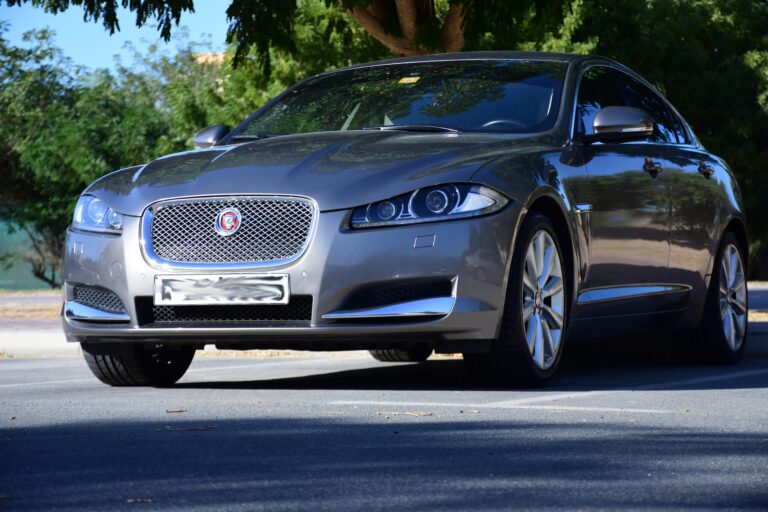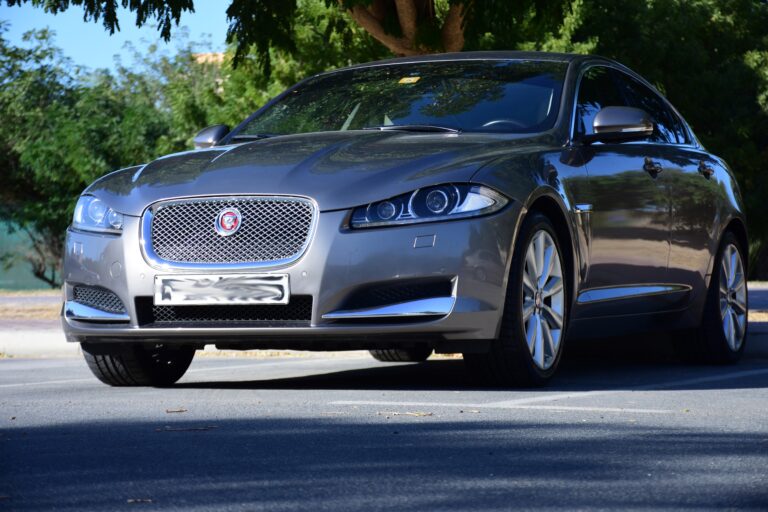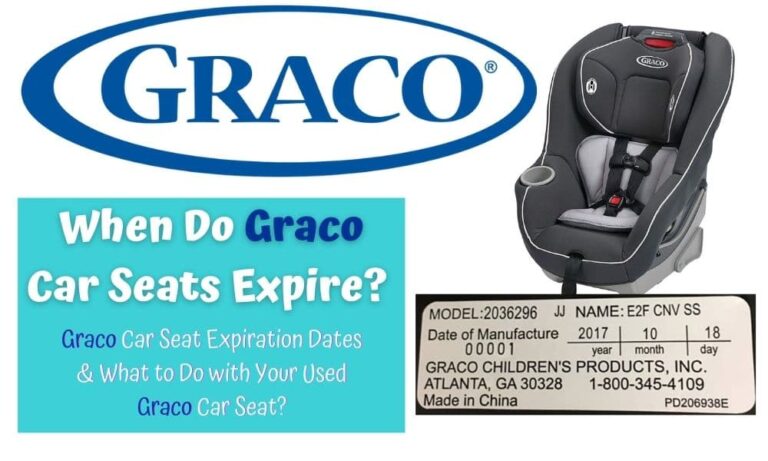Brand New Car It’s Noisy: Decoding the Unexpected Symphony
Brand New Car It’s Noisy: Decoding the Unexpected Symphony cars.truckstrend.com
The pristine scent of a new car, the flawless paint job, the quiet hum of a perfectly engineered machine – these are the hallmarks of a brand new vehicle. It’s an investment, a symbol of freedom, and an expectation of unadulterated driving pleasure. So, when the dream of serene cruising is shattered by an unexpected symphony of squeaks, rattles, whines, or groans, it can be profoundly disappointing, even alarming. "Brand New Car It’s Noisy" isn’t just a lament; it’s a genuine phenomenon that affects many new car owners, turning excitement into frustration. This comprehensive guide will delve into why a new car might be noisy, how to identify the source, what steps to take, and potential solutions to restore the peace and quiet you paid for.
The importance of addressing new car noise extends beyond mere annoyance. While some sounds might be harmless quirks, others could signal underlying mechanical issues that, if left unaddressed, could lead to costly repairs down the line or even compromise safety. Furthermore, persistent noise detracts significantly from the ownership experience, impacting comfort, perceived quality, and even the vehicle’s resale value. Understanding this issue is crucial for any new car owner to protect their investment and ensure their driving experience lives up to expectations.
Brand New Car It’s Noisy: Decoding the Unexpected Symphony
The Paradox of Silence vs. Sound: Why New Cars Can Be Noisy
When you drive a new car off the lot, your expectation is often a near-silent cabin, a testament to modern engineering and manufacturing precision. Yet, many owners report various noises, sometimes right from day one. This apparent paradox stems from several factors, some normal and others indicative of a problem.
Firstly, a brand new car is in a "break-in" period. Components like the engine, transmission, and brakes are settling into their operational rhythm. Minor sounds during this phase – a slight hum from a new engine, the settling of new brake pads (which can sometimes squeal briefly), or the initial adjustment of suspension components – can be considered normal. These often dissipate after the first few hundred miles. Secondly, manufacturing tolerances, while tight, still allow for minute variations. A slightly misaligned panel, a piece of trim that isn’t perfectly snug, or a wire harness rubbing against a hard surface can generate unexpected sounds. Even the adhesive or clips used in assembly need time to fully set or flex. Thirdly, modern vehicles are complex machines packed with electronics, HVAC systems, and safety features, all of which contribute to the overall acoustic environment. Sometimes, it’s the hum of a fuel pump, the whir of a cooling fan, or the sound of air moving through vents that becomes more noticeable in an otherwise quiet cabin. The key is distinguishing these normal "new car" sounds from persistent, unusual, or escalating noises that warrant attention.
Identifying the Culprit: Common Sources of Noise in Brand New Vehicles
Pinpointing the source of an unwelcome noise is the first critical step toward resolution. Noises in a new car can broadly be categorized, each with its own characteristics:
-
Mechanical Noises: These often originate from the engine, transmission, brakes, suspension, or exhaust system.

- Engine: Ticking, tapping, or knocking sounds can indicate issues with valvetrain components, fuel injectors, or, in rare severe cases, internal engine problems. A persistent squeal might be a loose or worn belt.
- Transmission: Whining, grinding, or clunking noises, especially when shifting gears or accelerating, can point to transmission fluid issues, worn gears, or internal component problems.
- Brakes: While new brake pads can sometimes squeal faintly as they bed in, persistent loud squealing, grinding, or a pulsation during braking suggests issues with pads, rotors, or calipers.
- Suspension: Squeaks, creaks, or clunks, particularly over bumps or uneven surfaces, often indicate problems with bushings, ball joints, struts, or shocks.
- Exhaust: Rattling sounds could be a loose heat shield, while a persistent loud rumble might suggest an exhaust leak.

-
Aerodynamic/Wind Noises: These sounds are typically heard at higher speeds and often manifest as whistling, howling, or a general whooshing.

- Poor Seals: Gaps or imperfect seals around windows, doors, or the sunroof are common culprits, allowing wind to enter the cabin and create noise.
- Misaligned Panels: Even slight misalignment of body panels can create turbulence and wind noise.
- Exterior Accessories: Aftermarket roof racks, poorly installed bug deflectors, or even certain antenna designs can generate wind noise.
-
Road Noise: This is the general sound transferred from the road surface into the cabin.
- Tires: The most significant contributor. Tire type, tread pattern, and even inflation pressure heavily influence road noise. Aggressive or worn tires are often noisier.
- Lack of Insulation: While new cars are generally well-insulated, some models or trims may have less sound-deadening material in the wheel wells, floor, or firewall, allowing more road noise to penetrate.
- Road Surface: Certain road surfaces (e.g., concrete vs. asphalt) can inherently generate more noise.
-
Interior Rattles/Squeaks: These are often the most frustrating as they can be elusive and seemingly originate from everywhere.
- Loose Trim: Dashboard components, door panels, pillar trim, or console pieces can rattle if not securely fastened.
- Seat Mechanisms: Seatbacks, headrests, or seatbelt buckles can squeak or rattle.
- HVAC System: Fan motors, vent louvers, or even ductwork can produce noises.
- Loose Items: Don’t forget to check items in the glove box, center console, door pockets, or under seats – sometimes the simplest explanation is the right one!
Beyond Annoyance: When Noise Indicates a Problem
It’s crucial to differentiate between minor, temporary new car sounds and noises that signal a genuine problem. While a slight brake squeal for the first 50 miles might be normal, persistent grinding is a red flag. A soft, consistent hum from the engine is expected, but a loud, metallic knocking is cause for immediate concern.
Noises that are constant, get louder with speed or engine RPM, are accompanied by vibrations, or change with specific actions (like turning, braking, or shifting) are more likely to indicate a mechanical issue. These issues, if left unaddressed, can escalate from a mere annoyance to a safety hazard or a major repair bill once the warranty expires. For example, a failing wheel bearing can start as a hum and eventually lead to wheel detachment. An undiagnosed engine knock could foreshadow catastrophic engine failure.
The warranty on your brand new car is your primary protection. Documenting any unusual noises and reporting them promptly to the dealership is vital. Doing so creates a paper trail and ensures that potential defects are addressed under warranty, saving you significant out-of-pocket expenses. Ignoring a suspicious noise could be a costly mistake.
Your Action Plan: What to Do When Your New Car is Noisy
Discovering your new car is noisy can be frustrating, but a systematic approach can lead to a quicker resolution.
Step 1: Document Everything. This is arguably the most important step.
- Type of Noise: Is it a squeak, rattle, hum, grind, whine, clunk, hiss, or whistle?
- Location: Where does it seem to be coming from (front, rear, left, right, dashboard, engine bay)?
- Conditions: When does it occur? (e.g., only over bumps, at specific speeds, during acceleration/braking, when turning, on cold start, after driving for a while, in wet/dry weather).
- Frequency: Is it constant, intermittent, or cyclical?
- Severity: How loud is it? Does it seem to be getting worse?
- Video/Audio: If possible and safe, record the sound. This can be invaluable for technicians.
Step 2: Isolate the Sound. Try to narrow down the source.
- Drive with windows up and down.
- Have a passenger help listen.
- Remove all loose items from the cabin (glove box, console, trunk).
- Drive on different road surfaces.
- Test with the AC on/off, radio on/off.
Step 3: Consult Your Owner’s Manual. Some noises might be described as normal operating characteristics or relate to specific features. It’s always good to check.
Step 4: Contact the Dealership/Manufacturer. This is your primary avenue for resolution under warranty.
- Schedule an Appointment Promptly: The sooner, the better, especially if you suspect a defect.
- Be Specific: Provide all your documented information. Don’t just say "it’s noisy"; explain what kind of noise, when it happens, and where it seems to come from.
- Insist on a Test Drive with a Technician: This is crucial. You know the noise best. Take the technician on your usual route where the noise is most prominent.
- Understand Your Warranty Rights: Familiarize yourself with your vehicle’s warranty coverage for new car defects.
- Get Everything in Writing: Ensure every visit, diagnostic, and repair attempt is documented on your service record.
Step 5: Don’t Dismiss It. If the dealer initially can’t find the noise or dismisses it, be persistent. Sometimes, it takes multiple attempts or a different technician to diagnose an elusive sound. Escalate to the service manager if necessary.
Mitigating the Maddening Sounds: Solutions and Soundproofing
The primary solution for a noisy brand new car, especially if the noise indicates a defect, is a dealer/warranty repair. The manufacturer is obligated to fix any covered defects. This is the most cost-effective and appropriate solution for issues like faulty components, misaligned panels, or poor seals.
However, once warranty issues are ruled out, or for minor annoyances like excessive road noise or persistent rattles not deemed defects, you might consider DIY soundproofing or aftermarket solutions:
- Sound Deadening Mats: These are typically butyl rubber with an aluminum foil layer. Applied to door panels, floorboards, trunks, and wheel wells, they add mass to panels, reducing vibrations and road noise.
- Closed-Cell Foam: Ideal for filling small gaps behind trim pieces or around wiring harnesses to eliminate rattles and squeaks.
- Spray Foam (Use with Caution!): Specific automotive-grade foams can be used in hard-to-reach cavities, but improper application can cause damage or trap moisture. Consult an expert before using.
- Weather Stripping: Replacing worn or adding extra weather stripping around doors and windows can significantly reduce wind noise.
- Acoustic Liners: Specialized liners for wheel wells can absorb tire and road noise before it enters the cabin.
- Quieter Tires: If road noise is the primary concern, investing in touring tires specifically designed for low noise can make a significant difference, though this is a post-purchase cost.
- Regular Maintenance: Keeping components like suspension bushings lubricated (where applicable) and ensuring all interior fasteners are tight can prevent rattles.
Potential Costs Associated with New Car Noise Diagnosis & Mitigation
While warranty repairs should ideally cost you nothing, there can be associated costs if the issue isn’t covered or if you pursue aftermarket solutions.
| Service/Item | Description | Estimated Cost Range (USD) | Notes |
|---|---|---|---|
| Diagnostic Fee (Dealership) | Initial assessment by technician to identify noise source. | $100 – $250 | Often waived if repair is performed under warranty. For non-warranty diagnosis. |
| Diagnostic Fee (Independent Shop) | Assessment by a trusted mechanic. | $75 – $200 | May be more affordable, but less specialized in brand-specific new car issues. |
| Warranty Repair (Parts & Labor) | Cost of parts and labor covered under manufacturer’s warranty. | $0 | Assumes noise is due to a manufacturing defect or covered component failure. |
| Non-Warranty Repair (Minor) | e.g., Tightening loose trim, lubricating squeaky components. | $50 – $200 | Simple fixes not covered by warranty or user-induced. |
| Non-Warranty Repair (Moderate) | e.g., Replacing worn bushings, minor exhaust leak repair, re-sealing a door. | $200 – $800 | More involved repairs not covered by warranty. |
| Non-Warranty Repair (Major) | e.g., Transmission component replacement, significant engine repair. | $1,000 – $5,000+ | Rare for brand new cars but possible if a critical component fails early and isn’t covered or warranty is voided. |
| Sound Deadening Mats (DIY) | Butyl rubber mats for doors, trunk, floor. | $100 – $400 | Material cost for DIY application. Professional installation adds labor. |
| Closed-Cell Foam/Insulation (DIY) | For filling cavities, reducing rattles. | $30 – $150 | Material cost for DIY. |
| Weather Stripping (DIY) | Replacement for door/window seals to reduce wind noise. | $20 – $100 per roll | Material cost for DIY. |
| Professional Soundproofing | Full vehicle sound deadening installation by a specialist. | $1,000 – $3,000+ | Varies greatly based on vehicle size and extent of work. |
| Quieter Tires | Cost difference when upgrading to tires designed for low noise. | $50 – $200 per tire | Premium for quieter models over standard. |
| Legal Consultation (Lemon Law) | Attorney fees if considering legal action for persistent unresolved issues. | Varies, often $200+/hour | Only if all other avenues fail. Some attorneys work on contingency. |
Frequently Asked Questions (FAQ) about Noisy New Cars
Q: Is it normal for a brand new car to make noise?
A: Some minor sounds during the initial break-in period (first few hundred miles) can be normal, such as slight engine hum changes or brake pad settling. However, persistent, loud, or unusual noises (grinding, clunking, strong rattles) are generally not normal and should be investigated.
Q: How long should I wait before reporting a noise to the dealership?
A: If the noise is significant, unusual, or persistent after the first few days of ownership, report it immediately. Don’t wait, as early documentation is key for warranty claims.
Q: Will a noisy new car affect its resale value?
A: Yes, if the noise indicates an unresolved issue or a perceived defect. Buyers are less likely to pay top dollar for a vehicle with known or suspected problems, even if they’re just annoying sounds.
Q: What if the dealer says they can’t find the noise?
A: Be persistent. Provide detailed documentation, offer to take a test drive with the technician to demonstrate the noise, and if necessary, escalate the issue to the service manager or manufacturer’s customer service. Some noises are intermittent or only occur under specific conditions, making them hard to diagnose.
Q: Can I soundproof my new car myself?
A: For general road or wind noise, yes, you can apply aftermarket sound deadening materials. However, for mechanical noises, it’s always best to have the underlying issue diagnosed and fixed by a professional under warranty first. Soundproofing a mechanical issue only masks the problem.
Q: What’s the difference between road noise and wind noise?
A: Road noise is the sound transmitted from the tires and road surface through the vehicle’s structure into the cabin. It typically changes with road texture and tire type. Wind noise is generated by air flowing over the vehicle’s exterior, especially around gaps or protrusions, and is usually more pronounced at higher speeds.
Conclusion
The excitement of purchasing a brand new car is an experience that should be savored, not overshadowed by unexpected noises. While some minor sounds are part of the vehicle’s initial break-in, persistent or alarming noises should never be dismissed. Understanding the potential sources of noise, meticulously documenting your observations, and proactively engaging with your dealership are critical steps to ensure your investment delivers the quiet, refined driving experience you paid for. By taking these actions, you empower yourself to resolve issues efficiently, protect your vehicle’s long-term health, and ultimately, preserve the joy of owning a truly new car. Don’t let a "noisy new car" diminish your driving pleasure; take action and reclaim the peace and quiet you deserve.





